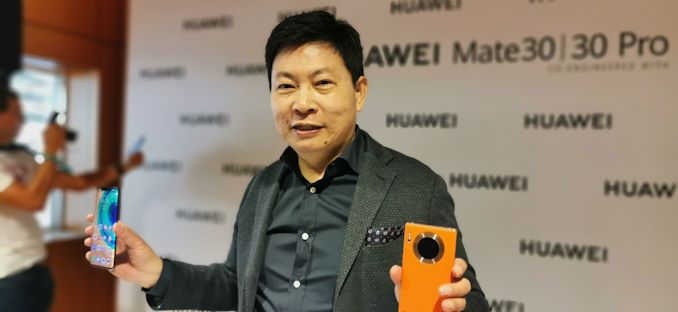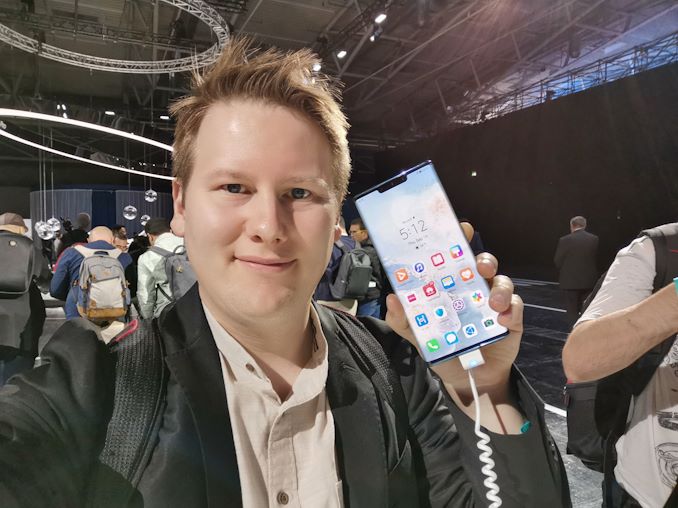A Day with the Huawei Mate 30 Pro: Kirin 990 and 7680 FPS Slow Motion Tests
by Dr. Ian Cutress on September 23, 2019 4:00 AM EST- Posted in
- Smartphones
- Huawei
- Kirin 990
- Mate 30 Pro
- 7680fps
Final Thoughts
The big question on everyone’s lips is whether Huawei can survive without the Play Store, and then in turn, without Google’s main apps like Gmail, YouTube, or Maps.
To address things first, no, Google Play Store cannot be side loaded. It requires Google’s Mobile Services (GMS), which are not enabled on the new Huawei smartphones. Huawei will not give users directions on how to install GMS, however we are expecting them to unlock the boot loader to give users kernel access. Also, Huawei has officially stated that they will not instruct retailers to give directions how to get around it, though retailers are more than welcome to help users get around that issue, but Huawei will not assist.
If the US-China issue is solved, the CEO has stated that they are able to reinstate GMS and Google’s Apps overnight. Until that point, users are directed to Huawei’s own app store (called App Gallery), and other app stores, that contain the most popular applications (Facebook, Instagram, Whatsapp – these apps can be sideloaded from apks anyway). Huawei is putting $1B into enhancing its own app store, to encourage developers to create applications for Huawei.
Until it gets sorted out, Huawei’s recommendations for anyone wanting to use Google Apps is simple: most of the applications can be accessed through the web. Gmail, Photos, Docs, Calendar, Maps, and others all have their own web interfaces, and so users could just create shortcuts on the main screen to these websites. For certain things like Google Fit, or Google Drive, it gets a bit more complex. Unfortunately,
I don’t think that the lack of Google’s apps is the main issue here – it’s the lack of the Play Store. Even though most casual users flip between the same few basic applications, when it comes to things like Evernote, Uber/Lyft, Otter, BBC News, VLC, Dropbox, Airline apps, I’m going to have to side load them all, and there’s no guarantee of continual updates. It’s going to be a pain. Add on top of that, there is no Google Pay, which I’ve started to use frequently.
Could I use the Mate 30 Pro without the Play Store as a daily device? I believe so – I think I could manage for the most part, and for the few items that won’t work, I would have to find alternatives. But ultimately it’s a high bar to entry, and I would have to spend an hour or two with the device making sure I have my primary apps installed from the beginning.
As for the features of the smartphone, I like the display, although aside from removing the side bezels, there isn’t much use for the wrap-around nature. Not having a physical volume key isn’t a problem for me, and my grip on the phone ultimately hasn’t changed much. It would be interesting to have it in a case, given that I almost always use a case, and to see if that affects anything. The display is bright, and the size is good, and the performance seems more than adequate. Assuming the software ecosystem can come into play here, the device handles itself really well.
For the photography, this early sample (non-final software) is a bit hit and miss. The standard photos don’t look as great as my P30 Pro, which might be down to the P in P30 standing for photography. But that slow motion 7680 fps mode on the Mate 30 Pro is great. As long as you have enough light and can time it just right, this smartphone can easily provide a good slow motion camera if you are happy with the 720p resolution.
Huawei is set to launch the Mate 30 Pro in October, starting with China and a few select European countries. Other EU areas will come through Q4. Huawei will make other announcements about the Middle East and Latin America in due course, but has promised to release it there as well. Also upcoming is the 5G version, which is likely to show up further into Q4, at least in China to begin with. The 8 GB/256 GB model will retail for 1099 Euro, with the 5G version having the same specifications for 1199 Euro.
We will have a full proper review of the Kirin 990 chipset and the Mate 30 Pro, including display testing, full benchmarks, and battery life testing, over the next few weeks.













47 Comments
View All Comments
StevenD - Monday, September 23, 2019 - link
1100e for a device which comes with all the hassles of having to sideload a lot of the apps?Am I being cheap, cause that sounds crazy to me. Especially when you think that, for that price, you can definitely get a great phone with a great camera.
BedfordTim - Monday, September 23, 2019 - link
You could just use a third party store like Yalp.reggjoo1 - Monday, September 23, 2019 - link
Or, you can install gsf, without root, in ten minutes. Excellent article on 9to5 google.ChorizoNinja - Tuesday, September 24, 2019 - link
I am sorry, but 1099€ is a little bit of a joke. The slow motion camera is just a cheap interpolation, and it doesn't have google services. In my world I would grab a note 10, at least the warranty service, in my case, was excellent... and I have security patches and a full version of android, plus the stylus.iSeptimus - Wednesday, September 25, 2019 - link
Yup, it is ridiculous. Most people's time is worth more.oRAirwolf - Monday, September 23, 2019 - link
I actually enjoy slow motion video quite a bit. I use it when shooting guns. I am honestly pretty jealous of this extremely high frame rate video. I never thought I would be jealous about another phone this year after purchasing the OnePlus 7 Pro.s.yu - Tuesday, September 24, 2019 - link
I hope you paid attention, it shoots 1920fps at what they claim to be 720P (but that also requires verification since Huawei lies about everything), then interpolates each captured frame into 4.lukedriftwood - Monday, September 23, 2019 - link
I should point out that slowmo frame rates higher than 960fps (1920fps and 7680fps) are motion interpolated from 960fps native capture.Ian Cutress - Monday, September 23, 2019 - link
It's 1080p960 or 720p1920. That's more than just a simple interpolation, otherwise it would be able to take 1080p video and then interpolate as it is saving the file from memory and the data goes through the ISP.s.yu - Monday, September 23, 2019 - link
"do clever interpolation to appear as if it is a higher frame rate"Ian, you're calling falsities "clever", and used too slow a water stream for the test. The correct way is to use a sprinkler, go very close to the sprinkler, and point the camera on something in the same plane of focus, for example grass, as the sprinkler. It would clearly show how ugly the interpolation is. Huawei's 480fps interpolated to 960fps was already shown to be very ugly under the sprinkler test, interpolating 1 into 4 frames is even uglier and more dishonest. Sony only advertised 960fps when they properly read out every frame. Not Huawei, not these people, they can't stop themselves from lying.
Usually we'd have Andrei doing smartphone tests, but has all that Huawei pampering clouded your judgement?